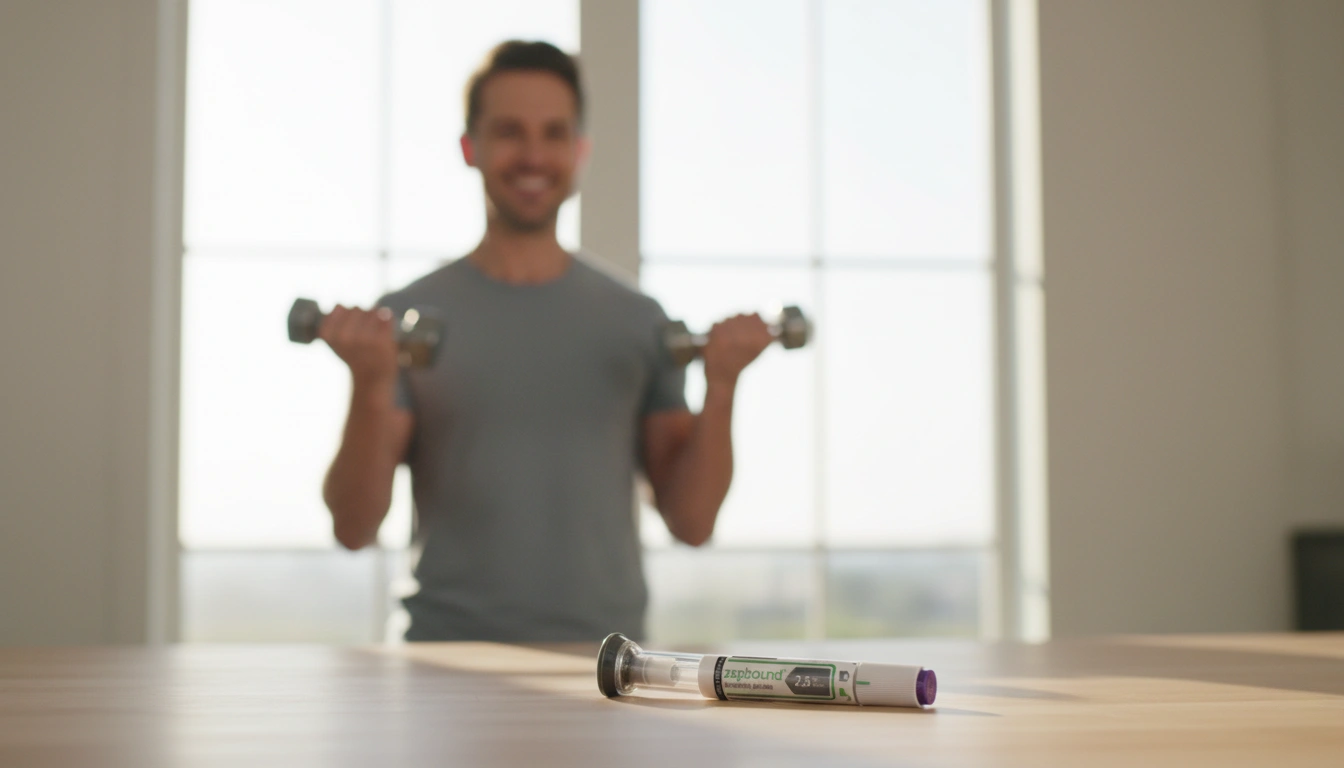How Much Should You Eat on Zepbound?

The journey to weight loss is often fraught with questions, especially regarding the dietary adjustments necessary to maximize the benefits of medications like Zepbound. With the rise of innovative weight loss solutions, many individuals are turning to Zepbound, a medication that works by mimicking the body's natural hormones to help regulate appetite and food intake. But how much should you actually eat while on Zepbound to ensure you achieve your weight loss goals?
In this blog post, we will explore the ideal dietary approach for individuals using Zepbound, delving into the best food choices, meal planning strategies, and how to maintain a balanced diet during your weight loss journey. By the end, we hope to empower you with actionable insights that can help you navigate your eating habits while on Zepbound, ensuring a healthier and more sustainable path to weight loss.
Introduction
Did you know that nearly 70% of adults in the U.S. are classified as overweight or obese? This staggering statistic underscores the increasing prevalence of weight-related health issues and the need for effective solutions. Zepbound, a medication designed to assist with weight management, has gained attention for its ability to help individuals achieve significant weight loss by leveraging the power of hormones that regulate appetite and digestion.
As we embark on this exploration of eating on Zepbound, it’s essential to understand that the medication synergizes best with a balanced diet. This means that while Zepbound can help reduce your appetite, the quality of what you consume remains crucial. So, how much should you eat on Zepbound? The answer varies from person to person, but we will provide guidelines that can help you determine your individual needs.
In this post, we’ll cover:
- An overview of how Zepbound works and its impact on appetite.
- Suggested macronutrient breakdowns and portion sizes.
- Types of foods to prioritize and avoid.
- Practical tips for meal planning and preparation.
- The importance of hydration and ongoing support.
Together, we'll navigate through these essential elements to create a tailored approach that complements your Zepbound journey.
Understanding Zepbound and Its Effects on Appetite
Zepbound, which contains the active ingredient tirzepatide, is a groundbreaking medication that combines the effects of glucose-dependent insulinotropic polypeptide (GIP) and glucagon-like peptide-1 (GLP-1) receptor agonists. These hormones play a vital role in regulating appetite and food intake. By acting on specific receptors in the brain, Zepbound helps to:
- Decrease Appetite: Users often report a reduced desire to eat, which can lead to a decrease in overall calorie intake.
- Increase Feelings of Fullness: Zepbound helps prolong the sensation of satiety after meals, making it easier to stick to a lower-calorie diet.
- Slow Gastric Emptying: The medication slows down the pace at which food leaves the stomach, further contributing to feelings of fullness.
These combined effects make Zepbound an effective tool for individuals looking to lose weight, especially when paired with a reduced-calorie diet and increased physical activity. However, understanding how much to eat while on Zepbound is essential for maximizing results and ensuring nutritional adequacy.
How Much Should You Eat on Zepbound?
When it comes to dietary intake while taking Zepbound, there are no one-size-fits-all answers. Several factors influence how much you should eat, including your individual health goals, activity level, and side effects experienced from the medication. However, general guidelines can help you create a sustainable eating pattern that aligns with your weight loss objectives.
General Caloric Recommendations
- Women: For women taking Zepbound, a daily caloric intake of 1,200 to 1,500 calories is generally recommended. This amount should support weight loss while ensuring that essential nutrients are consumed.
- Men: Men may benefit from a slightly higher caloric intake, typically ranging from 1,500 to 1,800 calories per day. Again, this should be adjusted based on personal activity levels and metabolic needs.
Macronutrient Distribution
A balanced diet comprises three primary macronutrients: carbohydrates, proteins, and fats. Here’s a breakdown of how to distribute these in your daily intake while on Zepbound:
- Protein: Aim for at least 60 to 70 grams of protein daily. This can help preserve lean muscle mass, especially during weight loss. Protein sources include lean meats, poultry, fish, eggs, legumes, and low-fat dairy.
- Carbohydrates: Carbohydrates should constitute about 45% to 65% of your total daily energy intake. Focus on high-fiber, nutrient-dense sources such as whole grains, fruits, and vegetables. This not only provides energy but also supports digestive health.
- Fats: Healthy fats should make up 20% to 35% of your daily caloric intake. Prioritize unsaturated fats found in nuts, seeds, avocados, and olive oil, while limiting saturated fats and trans fats.
Portion Control and Eating Frequency
Given the appetite-suppressing effects of Zepbound, it’s essential to listen to your body’s hunger cues. You may find that smaller, more frequent meals work better for you. Here are some practical recommendations:
- Three to Five Meals Daily: Depending on your appetite and side effects, you might aim for three to five smaller meals throughout the day. This approach can help manage hunger and prevent overeating.
- Balanced Plate Method: When planning meals, consider using the balanced plate method: fill half your plate with non-starchy vegetables, one-quarter with lean protein, and one-quarter with high-fiber carbohydrates.
- Mindful Eating: Pay attention to portion sizes and eat slowly. This practice can help you recognize your body’s signals of fullness, which may curb the urge to overeat.
Foods to Include in Your Diet While on Zepbound
To support your weight loss journey while minimizing potential side effects, focus on incorporating nutrient-dense foods that provide essential vitamins and minerals. Here’s a closer look at recommended food groups:
Lean Proteins
Consuming adequate protein is essential for muscle maintenance and satiety. Consider including:
- Skinless poultry (chicken and turkey)
- Fish and seafood
- Eggs
- Low-fat dairy products (Greek yogurt, cottage cheese)
- Plant-based sources such as beans, lentils, and tofu
High-Fiber Foods
Fiber aids in digestion and promotes feelings of fullness. Aim to include:
- Whole grains (quinoa, brown rice, whole wheat bread)
- Fruits (berries, apples, pears)
- Vegetables (leafy greens, broccoli, carrots)
- Legumes (beans, chickpeas, lentils)
Healthy Fats
Incorporate healthy fats while being mindful of portion sizes. Opt for:
- Nuts and seeds (almonds, chia seeds, flaxseeds)
- Avocado
- Olive oil and other vegetable oils
- Fatty fish (salmon, mackerel)
Hydration
Staying hydrated is crucial, especially while taking Zepbound. Aim for at least 64 fluid ounces (about eight cups) of water or other non-caloric beverages daily. Limit sugary drinks and alcohol, as they can contribute to unwanted side effects and calories without nutritional benefit.
Foods to Avoid on Zepbound
While Zepbound can help reduce appetite, it’s still important to be mindful of certain foods that may hinder your progress or exacerbate side effects. Consider limiting or avoiding the following:
Fried and Processed Foods
These foods are often high in unhealthy fats and can contribute to nausea and digestive discomfort. Additionally, they may lead to increased calorie intake without providing essential nutrients.
Sugary Beverages and Desserts
Limit sugary drinks like sodas, sweetened teas, and desserts, as they can cause blood sugar spikes and provide empty calories. This can impede weight loss efforts and may lead to feelings of hunger shortly after consumption.
High-Sodium and Saturated Fat Foods
Foods high in sodium and saturated fats, such as fast food, processed snacks, and fatty cuts of meat, can lead to increased blood pressure and may worsen gastrointestinal symptoms. By reducing these foods, you can support better overall health and weight management.
Meal Planning Tips for Success
To optimize your eating habits while on Zepbound, consider implementing the following meal planning strategies:
Plan Ahead
Creating a weekly meal plan can help you stay organized and make healthier choices. Include a variety of foods to meet your macronutrient needs while incorporating seasonal fruits and vegetables.
Meal Prep
Spend some time preparing healthy meals and snacks in advance. This can save time during busy weekdays and prevent you from reaching for less healthy options when hunger strikes.
Snack Wisely
Choose healthy snacks that combine protein and fiber to keep you satisfied between meals. Consider options like Greek yogurt with fruit, hummus with veggies, or a handful of nuts.
Stay Flexible
Remember that not every day will be perfect. Allow yourself to enjoy occasional treats or meals out without guilt, as long as you maintain a focus on overall balance and health.
The Role of Support in Your Weight Loss Journey
As you navigate your weight loss journey with Zepbound, having a support system can significantly enhance your experience. Consider reaching out to healthcare professionals, including registered dietitians, who can provide personalized guidance and support tailored to your individual needs.
At TrimRx, we believe that sustainable weight loss is achievable through a combination of science, empathy, and personalized care. Our medically supervised weight loss programs are designed to empower you with the tools and resources needed to succeed. We encourage you to take our free assessment quiz to see if you qualify for our prescription weight loss medications, including Zepbound.
Conclusion
As you embark on your journey with Zepbound, understanding how much to eat and what foods to prioritize is essential for maximizing your results. By focusing on nutrient-dense options, practicing portion control, and staying hydrated, you can create a sustainable eating pattern that supports your weight loss goals.
If you have further questions about how to tailor your diet while on Zepbound or need personalized guidance, consider reaching out to a registered dietitian. Together, you can build a meal plan that aligns with your health goals and complements your weight loss journey.
Remember, achieving lasting results may take time, but with the right approach and support, you can reach your desired weight and improve your overall health and well-being.
FAQ
Can I eat normally on Zepbound?
While you can eat a variety of foods, it’s recommended to focus on nutrient-dense options and avoid foods that may exacerbate side effects or hinder your weight loss.
How much protein should I consume on Zepbound?
Aim for at least 60 to 70 grams of protein daily to help preserve muscle mass and promote satiety.
What should I do if I experience side effects from Zepbound?
If you encounter gastrointestinal side effects, consider adjusting your food choices to include bland, easy-to-digest foods and stay hydrated. Consulting with a healthcare professional can also provide additional support.
How can I get personalized nutrition guidance?
Consider taking our free assessment quiz at TrimRx to explore personalized weight loss programs and connect with registered dietitians who can guide you through your journey.
Is Zepbound suitable for everyone?
Zepbound is indicated for adults with obesity or overweight and should be used in conjunction with a reduced-calorie diet and increased physical activity. Always consult with a healthcare provider to determine if it’s the right choice for you.

Transforming Lives, One Step at a Time
Keep reading
Navigating Your Path: How Many Doses Are In Zepbound and What It Means for Your Health Journey
Curious how many doses are in Zepbound? Discover its weekly dosing schedule, available strengths, and titration process for effective weight loss. Learn more!
Navigating Your Zepbound Journey: Understanding Dosing and Expert Guidance
Wondering how to split doses of Zepbound? Learn why it’s unsafe & not recommended. Get expert guidance on Zepbound dosing for safe, effective weight loss with TrimRx. Click to learn more!
Understanding Zepbound Dosing: What is the Lowest Dose Available for Your Weight Loss Journey?
Curious what is the lowest dose of Zepbound available? Learn about Zepbound’s 2.5mg starting dose, titration, and safe use for weight loss. Get expert guidance!



